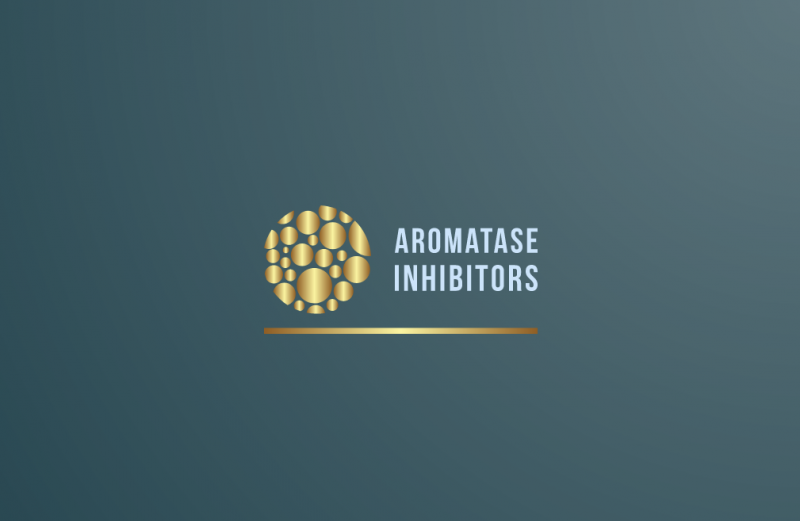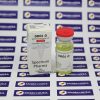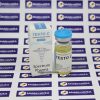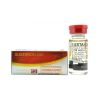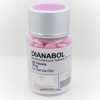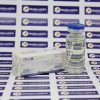Every athlete of the professional or average amateur level takes various pharmaceutical preparations. And this is in addition to the well-known proteins, gainers, and other useful nutritional supplements that allow you to gain the right amount of BCAA. The use of steroid products is necessary for many athletes not only to keep in perfect shape but also to gain it. For example, the use of Turinabol, Danabol, and other drugs allows a significant increase in the amount of testosterone in the body, the healing process is accelerated, and muscle mass increases.
And this is in addition to improving strength and endurance performance. However, after taking any steroid drugs, you can encounter several unpleasant phenomena. And every professional athlete in the field of bodybuilding, powerlifting, or other identical disciplines knows about it. For example, such a phenomenon as gynecomastia can manifest itself, which is associated with an increase in the nipples of men and the area near them. This is realized due to the predominance of female hormones after the cycle, since testosterone cannot be synthesized on its own in a full-fledged way after the course.
To minimize losses, improve the quality of the cycle, as well as to neutralize the side effects, the drug: aromatase inhibitor was created. Many people want to buy Anastrozole because such a pharmaceutical drug has a lot of features and is sometimes a necessary tool after a course of steroids.
What are the key features of using such a drug?
Anastrozole is an effective aromatase inhibitor that prevents the conversion of testosterone to estrogen. Thus, the negative phenomenon of steroid drug withdrawal is minimized. Moreover, such a remedy has a number of other effects:
- First, in the most effective way contributes to the improvement of muscular quality. This is achieved by neutralizing the action of female hormones;
- Secondly, it acts as a prophylactic against hypertension. Many athletes due to heavy physical exertion can face such a negative phenomenon. Anastrozole prevents it.
If you are looking for a company that is ready to offer such a drug profitably, then we advise you to choose our store.
Aromatase inhibitors
The action of IAs (anastrozole) is based on inhibiting the action of the aromatase enzyme. It prevents the excessive conversion of testosterone to estradiol, preserving or increasing the level of testosterone, and also suppressing the growth of excessive estrogen, without reducing their level completely. In other words, IAs act in a more physiological way.
As mentioned above, the greatest number of studies on the effectiveness and safety of IA use has been conducted in andrology, which does not prevent us from extrapolating these findings to other areas, including endocrinology or urology. In conclusion, we would like to give an example of the effective use of IA in andrological practice: in 2012, we presented data from a Russian study on the effectiveness of IA in improving spermatogenesis, including a comparison with anti-estrogenic drugs.
The study involved 120 men with idiopathic pathozoospermia from 18 to 47 years old. The mean age was 32 years. Group 1 received IA (anastrozole) – 1 mg once a day for 3 months, and Group 2 – anti-estrogens (tamoxifen) – 10 mg 2 times a day for 3 months. With a large number of changes in patients against the background of therapy, including hormonal background and spermogram quality, estradiol and testosterone levels changed significantly. In the IA group, testosterone levels increased by 70.7% (from 12.8+0.6 to 21.9+0.6 nmol/l) and estradiol levels decreased by 33.3% (from 108.4+4.2 to 72.3+3.3 pmol/l). In the AE group, testosterone levels increased by 36.3% (from 13.5+1.4 to 18.4+1 nmol/L) and estradiol levels decreased by only 7.3% (from 107.5+6.4 to 99.22+5.36 pmol/L).
In the IA subgroup, the sperm concentration increased from 16.7+4.3 to 30.1+5.2 million/ml, i.e. by 80.2%; the number of sperm with normal structure increased from 15.7+1.4 to 24.8+1.5%, i.e. by 58.0%. In the spermogram before and after the drug therapy in the IA subgroup there was a statistically significant increase in the number of sperm with motility category A – by 75.6%; sperm motility category B – by 70.1%; sperm motility category A+B – by 72.5%.
In the AE subgroup, the sperm concentration increased from 18.4+4.1 to 27.6+5.6 million/ml, i.e. by 50.0%; category A motility from 15.2+0.6 to 21.3+0.8, i.e. by 40.1%, and B motility from 17.3+1.4 to 24.5+0.6%, i.e. 41.6% respectively. The number of spermatozoa with normal structure – from 17,1+1,3 to 20,4+1,4%. Sperm motility (category A + B) – by 40.9%.
Thus, the data presented in the scientific literature indicate the relevance and effectiveness of IA in the correction of hormonal imbalances and, above all, hyperestrogenemia on the background of absolute or relative androgen deficiency and spermatogenesis disorders. Although these indications are not registered in our country, we share and support the interest of many authors in the use of such groups of drugs. We have accumulated great experience in the use of these drugs, and we understand the mechanism of their action in the spotlight of the problems under consideration: these drugs are successfully used abroad, in particular, they have indications for adolescent gynecomastia. And the development of gynecomastia without hyperestrogenism, even relative, is almost impossible, which again confirms the validity of the use of these drugs. We understand that the proposed therapeutic options require further study to improve the effectiveness of treatment of men with androgen deficiency developing against the background of obesity, diabetes mellitus, metabolic syndrome, and other pathologies, as well as to reduce the terms of fertility recovery for patients resorting to various, including in vitro fertilization, methods. Given the fact that more than 1.9 billion people were obese and overweight in 2016, the problem of androgen deficiency and measures to address it are of heightened relevance. And, of course, the prospect of preserving one’s own testosterone synthesis using endocrine-preserving agents such as IA looks extremely reasonable. As for the question of safety, there are no data on this issue in urology either. But the data of the cited clinical studies in andrology (indicated in the article) and the long-term experience of using aromatase inhibitors in women in the treatment of breast cancer, and prescribed for at least 5 years, in our opinion, prove the safety of using drugs of this class. And as the schemes used in urology do not lead to hypoestrogenism, the safety is obviously higher.

